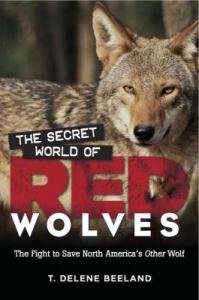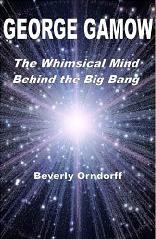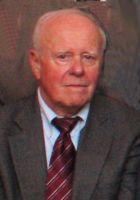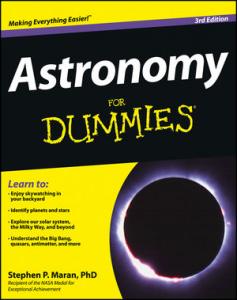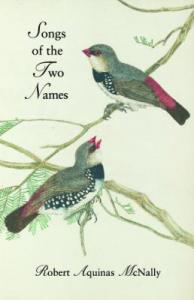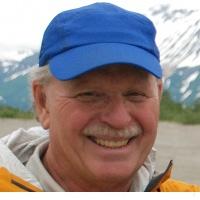Four new books demonstrate science writers’ diverse interests
T. DeLene Beeland
University of North Carolina Press; June 10, 2013; $28.00
ISBN: 978-1-4696-0199-1
Contact info:
- T. DeLene Beeland: (828) 575-4435, delene@nasw.org, @tdelene
- Publicist: Regina Mahalek, (919) 962-0581, Gina_Mahalek@unc.edu
- Author website: www.delene.us
- Blog website: http://sciencetrio.wordpress.com
Beeland writes:
Wolves are powerfully fascinating creatures. About seven years ago when I first learned of the red wolf, I was baffled that I'd never heard of this mammal before — but I was also instantly hooked on why that was.
Red wolves nearly went extinct in the mid-1900s, but some were captive bred and reintroduced in 1987 to coastal North Carolina. They have many fascinating twists in their history, such as the ability to hybridize with coyotes and a mysterious past where scientists aren't entirely sure how they evolved. I came up empty-handed in searches for a comprehensive and recent book on red wolves, so I decided to write the book I wanted to read. As a first-time author without a literary agent, I pitched the University of North Carolina Press directly. It felt like winning the lottery when they said "yes."In the beginning of my research, I saw my first wild red wolf. Granted, she was being held in a captive facility for medical treatment, but it was still a transformative experience to gaze at this animal and learn about her life history from red wolf biologist Ryan Nordsven. Listening to him, I realized that the field biologists' work was a powerful vehicle for the red wolf's story.
Next, I shadowed the recovery field team across several seasons of their work, and I also interviewed local landowners, managers, and hunters about their experiences and perceptions of red wolves. That became Part I of the book.
Part II goes back in time to explore the possible origins of red wolves, their decline in the wild, the roots of their captive breeding in the 1970s, and the early years of reintroduction.
Part III looks forward to future conservation threats, such as climate change and sea level rise, which menace the red wolves' only reintroduction area. For me, the book will be successful if it is deemed useful for the conservation of this beautiful and elusive southeastern predator.
——————————— GEORGE GAMOW:THE WHIMSICAL MIND BEHIND THE BIG BANG
Beverly Orndorff
E-book publishers: Amazon, Smashwords, February 2013, $6.99
ISBN: Smashwords: 978-0-9889886-0-6, Amazon: 978-0-9889886-1-3
Contact info:
- Beverly Orndorff, (804) 266-7080, bevorn@gmail.com
Buy this book now in the ScienceWriters bookstore.
Orndorff writes:
George Gamow (1904-1968), a fun-loving Russian-born American physicist, was a science polymath who instigated the modern version of the hot Big Bang theory, and led two colleagues to propose that the dying energy from that event should still pervade the cosmos. That signature of the Big Bang was indeed detected some years later, confirming that the universe had a definite beginning, on a “day without a yesterday,” as one pioneer cosmologist put it.
But the scientists who actually detected the Big Bang energy were totally unaware of the earlier Gamow-inspired work, which was forgotten and ignored by many. Some say it may have been due partly to difficulties of taking Gamow seriously because of his constant clowning and drinking. For all of his clowning, Gamow was indeed a serious physicist who worked with many of the 20th century’s most prestigious scientists, including Albert Einstein, Madame Curie, Niels Bohr, Ernest Rutherford, Edward Teller, Hans Bethe, Robert Oppenheimer, Paul Dirac, and Enrico Fermi.Although nominated, Gamow never won a Nobel Prize. More than a half a dozen Nobel Laureates have cited Gamow’s pivotal role in their work, however. Gamow also wrote internationally acclaimed popular science books for lay audiences, which inspired many youngsters to follow science careers. Several later won Nobel Prizes.
Gamow, for whom a moon crater is named, also made notable contributions to nuclear physics, DNA code-breaking, and defining the processes occurring in stars. George Gamow is one of the more influential and colorful 20th century scientists that most people have never heard of.
I had been a fan of Gamow’s popular writings since my high school days. His work was a factor in my decision to major in physics in college. I had long noted the absence of a biography of Gamow. A few years into my retirement from the Richmond Times-Dispatch, I decided to embark on a Gamow biography, which led me to many hours of poring through his published papers, and to tapping the vast resources of the American Institute of Physics’ Center for History of Physics.
I also spent a few days with Gamow’s son Igor and his wife, Elfriede, in Boulder, Colo., home of the University of Colorado, where George Gamow spent the final dozen years of his life. While there, I also interviewed a former Gamow physics department colleague, Dr. Albert Bartlett, and Dr. Richard McCray, George Gamow Distinguished Professor Emeritus at UC. Dr. Victor Alpher, son of Gamow’s protégé Ralph Alpher, has been extremely helpful in sharing valuable material regarding his father and material related to the evolution of the modern Big Bang theory.
I finally went the e-book route because of difficulties in interesting agents and publishers in this project. At least two major publishers indicated that, while Gamow was a worthy subject, biographies of scientists generally don’t sell well.
——————————— ASTRONOMY FOR DUMMIES, 3rd EditionStephen P. Maran
John Wiley & Sons, Inc., 2013, $22.95
ISBN: 978-1-118-37697-3
Contact info:
- Stephen P. Maran, (301) 656-7331, steve.maran@aas.org, http://aas.org/about/stephen-p-maran
- Publicist: Adrienne Fontaine, (201) 748-5626, afontain@wiley.com
- Agent: Skip Barker, (401) 742-8347, bdbarker4@gmail.com
- Book website: http://www.wiley.com/WileyCDA/WileyTitle/productCd-1118376978.html
Buy this book now in the ScienceWriters bookstore.
Maran writes:
ASTRONOMY FOR DUMMIES is an introduction to astronomy science and to the amateur astronomy hobby. It was suggested by my agent, who called the CEO of the original publisher, IDG Books Worldwide, and sealed the deal. It was the first science book in the For Dummies series. Now there are many. Wiley published a second edition in 2005. The first two editions were translated into eight languages; foreign rights for the new edition have been sold for three more.
I’m a professional astronomer, so writing the science content was easy. I haven’t been a hobbyist since the 1950s, however. Meanwhile, home telescopes have been computerized, with many new kinds of accessories. I consulted friends at Sky & Telescope magazine for guidance on the hobby, including the right equipment for a beginning stargazer in the current era.Breakthroughs in astronomy have occurred at an amazing rate since my first edition in 1999, when dark matter was still doubtful to some experts and exoplanets were just cropping up. The science content of each successive edition of ASTRONOMY FOR DUMMIES has been greatly revised. New social trends such as the proliferation of dark-sky parks, and opportunities to aid research with personal computers and smart phones. i.e., “Citizen Science,” have proliferated.
One Massachusetts astronomy professor adopted ASTRONOMY FOR DUMMIES as a textbook. I’ve wondered how his students felt about that.
——————————— SONGS OF THE TWO NAMESRobert Aquinas McNally
Grayson Books, July 2012, $10
ISBN: 978-0-9838603-1-0
Contact info:
- Robert McNally: (925) 674-1520; ramcnally@nasw.org
- Book website: http://www.graysonbooks.com/pr/songs_of_the_two_names.aspx
McNally writes:
This book began with a single, blank-verse sonnet written in the persona and voice of Carol von Linné — a.k.a. Linnaeus — that focused on the music woven into many of the Linnaean species names. As a nature writer who studied Latin for six years, I found this intersection of wild beings and language most appealing, so I set out to create a collection of blank-verse sonnets based on binomials.
Each sonnet took about a month to write (on the train in the morning, as I commuted to my day job), what with the research needed to fully grasp each name (e.g., Crotalus horridus, Physeter macrocephalus, and Phallus impudicus), and the dozens of drafts every poem had to pass through on its way to final polish. While I was working, I submitted individual sonnets to various literary magazines, and most were published.Given that response, I knew the next step was turning the series — grown to 23 poems over two years of work — into a collection for publication. After figuring out the sequencing, I entered the manuscript in contests at small publishers and magazines, which provide the usual path for publishing such short collections, also called chapbooks.
New Hampshire poet laureate Patricia Fargnoli, a fellow nature writer who described the sonnets as “praise songs for a natural world filled with wonder,” was judging the 2012 Grayson Books Poetry Chapbook contest, and she selected my manuscript. With that, SONGS OF THE TWO NAMES became a published reality.
———————————Deadline for July 2013 book blog: June 24, 2013
To submit your book announcement, follow the above format. Include your name, phone number, and email address, plus contact information for your publicist and agent. Send a jpg photo of yourself and of your book jacket (~200 by ~200 pixels).
Write 250-350 words to summarize your book’s contents. Tell how you developed your idea, researched the book, and wrote it. Include a little about the book’s route to publication. No press releases, please.
Send info to Lynne Lamberg, NASW book editor, llamberg@nasw.org.
